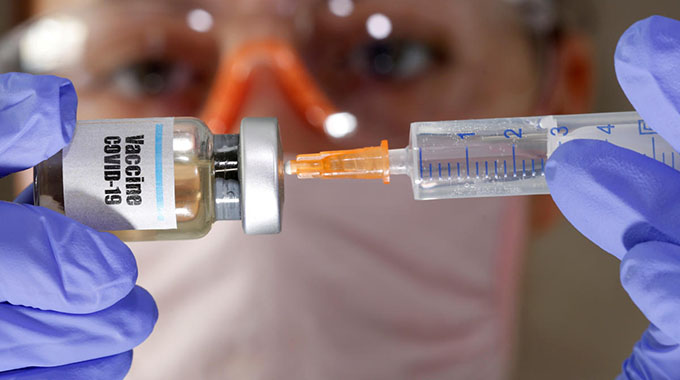Can You Get Covid-19 Coronavirus Twice? Here Is An Update On Reinfection

Bruce Y. Lee
Can you or can’t you? That is the big, big question.
Researchers have been trying to figure out whether you can get infected by the Covid-19 coronavirus more than once. After all, who wants a sequel to a bad experience, like watching Grown Ups 2 after the movie Grown Ups? Plus, the answer to this question can help address so many other things such as whether it’s safe to return to regular activities, how effective a vaccine may be, and how long this stinking pandemic may last.
So what’s the answer now? Well, as with Kanye West’s run for the Presidency, things are not yet completely clear. In fact, they can seem downright confusing. However, some recently published scientific studies have offered some more pieces of evidence.
For example, there are the Rhesus pieces from a study published in the journal Science. This study involved deliberately infecting a set of Rhesus macaques with the severe acute respiratory syndrome coronavirus 2 (SARS-CoV2) and then seeing if they could get deliberately infected again. Macaque rhymes with hacky sack, Monterrey Jack, and Nordic Track and is a species of monkey. This species has a lot of similarities with humans, except for perhaps the whole eating-termites-and-beetles thing and the expose-your-genitals-when-threatened thing. Well, the latter two at least aren’t similarities with most humans.
For the study, a research team from Peking Union Medical College in Beijing, China, led by Chuan Qin, intratracheally challenged six macaques with the SARS-CoV-2. Now if anyone tells you that they want to intratracheally challenge you with a virus (or anything else like doughnuts for that matter), keep in mind what this would mean. This basically entails sticking a tube down your throat into your trachea and then placing the virus there. It’s a way of making sure that you get infected.
The research team then confirmed that the macaques got sick from the virus. This included testing them up the wazoo, literally. They regularly checked the macaques’ rectal temperatures and their rectums, throats, and nasal cavities for the virus. Additionally, the research team followed the macaques’ symptoms and took chest X-rays that revealed signs of pneumonia.
Testing of the macaques’ blood showed that during the course of the infection the macaques developed antibodies against the protein spikes on the surface of the SARS-CoV2. If you recall, the Covid-19 coronavirus looks like a little spiky massage ball and uses the spikes to attach to and enter your cells. This was evidence that the macaques’ immune systems were responding against the virus.
Eventually, the six macaques survived the infections and recovered from their symptoms. However, the challenges didn’t end there for four of the macaques. Twenty-eight days after their first intratracheal challenge, they got, guess what, another such challenge. The other two macaques were spared this second infection and remained as controls to be used for comparison.
After being re-challenged, the four macaques did develop fevers for short periods of time but otherwise showed no other signs of re-infection in the ensuing two weeks, based on chest X-rays and testing, again up the wazoo. In fact, the four re-exposed macaques mustered even higher levels of antibodies against the spike proteins than they had during the first infection.
So it looked like 28 days after the initial infection, the macaques still had some type of immunity against the virus. Good news if you happen to be a macaque and reading this. But what if you aren’t a macaque? What if you are human? Are you similar enough to macaques whether or not you raise your tail when intimidated? Do these results apply to you?
Alas, there haven’t been similar challenge studies in humans yet. A World Health Organization (WHO) document from May 6 laid out a bunch of the risks and ethical challenges about doing human challenge studies in which volunteers would be deliberately exposed to the SARS-CoV2. As you can imagine, being exposed to a potentially deadly virus is not the same as being exposed to something like doughnuts. There are real immediate risks involved. Plus, if you haven’t figured it out yet, humans have a long history of doing very bad things to each other. This includes discriminating against different races and taking advantage of those perceived to be of lower status. For example, who exactly will be the volunteers for such challenge studies? Will it be wealthy people who can jump on to private yachts when it is time to social distance? Or will it be people more in disadvantaged situations?
A group of scientists did start a petition to Frances Collins, MD, the Director of the National Institute of Health (NIH), to “undertake immediate preparations for human challenge trials,” arguing that this will help develop and test a Covid-19 vaccine. From a scientific standpoint, human challenge studies would certainly help answer many questions about immunity a lot more directly and quickly. But as alluded to earlier, conducting such human challenge studies in a safe and ethical manner is not that easy. Like the title of a 2009 film, it’s complicated.
In the meantime, everyone will have to rely on more indirect human studies, such as the study published on June 18 in Nature Medicine. For this study, a research team from Chongqing Medical University in Chongqing, China, led by Ai-Long Huang, followed what happened to 74 people who were infected with the SARS-CoV2, half of whom never developed any symptoms. Thus, 37 were considered asymptomatic infections and 37 were symptomatic infections.
When you first get infected with a virus, it takes time for your immune system to develop an antibody response, that’s assuming that your immune system can even generate such a response. Not all viruses may elicit an immune response. The first type of antibody that your immune system may produce in your blood is immunoglobulin M, or IgM if you don’t have time to say immunoglobulin. This antibody doesn’t hang around for long, with production increasing momentarily and then decreasing. To remember this, use the mnemonic “M” for momentary.
Before IgM disappears, production of a second type of antibody, immunoglobulin G or IgG, ramps up and stays up for an extended period of time. IgG is the antibody that can help with persistent immunity. Just think, “gee, is IgG still around?”
For the Nature Medicine study, the research team measured the levels of these types of antibodies three to four weeks after the patients had been first exposed to the virus. For IgM, 81.1% of those who had asymptomatic infections and 83.8% of those who had symptomatic infection ended up testing positive. Similarly, for IgG, a greater percentage of the symptomatic patients (78.4 percent versus 62.2 percent) tested positive. In fact, those who had had symptoms tended to have significantly higher levels of IgG (medians of 20.5 versus 3.4) than those who didn’t.
About eight weeks after they had recovered from their infections, most patients already had declines in IgG levels, 93.3 percent of the asymptomatic patients and 96.8 percent of the symptomatic patients. These weren’t just itty-bitty declines but fairly large ones, medians of a 71.1 percent decline among the asymptomatic patients and a 76.2 percent decline among the symptomatic patients. Of note, 81.1 percent of the asymptomatic group and 62.2 percent of the symptomatic group had declines in the levels of neutralizing serum antibodies. In fact, 40.0 percent of asymptomatic patients and 12.9 percent of the symptomatic patients no longer had any measurable IgG.
Certainly, antibodies are only one component of your immune response to a virus, albeit an important one. They are like pants. Just because you no longer have them doesn’t necessarily mean that you are left completely exposed, especially if your happen to have been wearing Spanx underneath. Some kind of immunity against a virus may remain even if you don’t have detectable antibodies in your blood. But checking for antibodies in your blood serum is currently the easiest way to measure the level of protection that you may have.
So how does all of this fit in with the case reports of people getting re-infected with the virus? For example, the following NBC 9 news segment covered the case of a woman who apparently got infected again:
Is this case and similar cases actually cases of re-infection? Or do they represent situations in which false negative test results occurred between positive test results? In such cases, what seems like two separate infections could have instead simply been one really long infection. Also, there is the chance that a person could have a positive test and no longer be infected. The test for viral genetic material (i.e., RNA) could be detecting fragments of the virus rather than whole live version.
Either way, case reports are case reports and not scientific studies. There are exceptions to every rule, except for the rule that macaroni and cheese is always yummy and always appropriate. If such case reports do in fact represent real re-infections, then a major question is how common are such occurrences? Are they rare or common enough to be very worried about them?
It could be that your immune response and your subsequent immunity depend heavily on the type and severity of infection that you had in the first place. Not having symptoms may be great for the present time but could potentially elicit a weaker immune response. As you’ve seen, rather than being a single type of illness, Covid-19 can come in many different flavors.
Then there’s the question of how long immunity may last. As I covered previously for Forbes, a study of those who got the original SARS during the 2002-2003 outbreak suggested that immunity may last about two years. But as a recently released book about a family whose last name rhymes with speed bump or suction pump suggested, just because you are from the same family doesn’t mean that you will behave in exactly the same way. It’s still not clear all the ways that the SARS-CoV2 may differ from the SARS virus.
So there is some evidence that your immune response to the SARS-CoV2 may differ depending on factors such as how severe your infection was and how strong your immune system may be. Random chance may play a role too because nothing in life is 100 percent. If your immune response was not very strong in the first place, then perhaps the door is left wide open for re-infection. Would a subsequent infection then be more or less severe? The other issue is duration of immunity and protection. Is it only a few weeks? A couple months? A year? Longer?
So many questions.
Ultimately, immunity to the SARS-CoV2 may be much more complex than “yes you are immune because you had the infection” situation. Immunity is not like a toupee. It’s not either on or off. Different types of infection could lead to different degrees of immunity that could last for different lengths of time. Different can be really good when it comes to leadership, creativity, clothing, and a salad bar but not necessarily with immune responses to a virus. Such complexity could further complicate the heck out of the pandemic and its response. It would make simplistic approaches such as “oh, let’s get everyone exposed to the virus and sacrifice a bunch of lives so that the pandemic can end,” less likely to work.
Thus, the answer to the question of whether you can get infected by the Covid-19 coronavirus more than once may be “it depends.” – Forbes









Comments